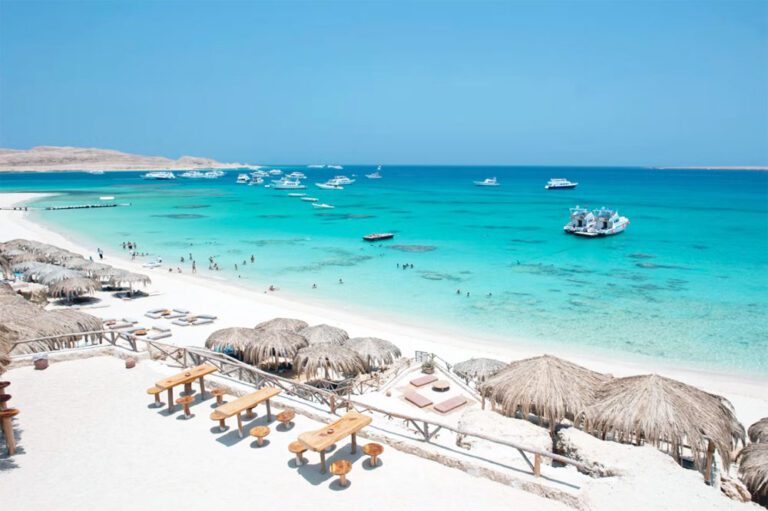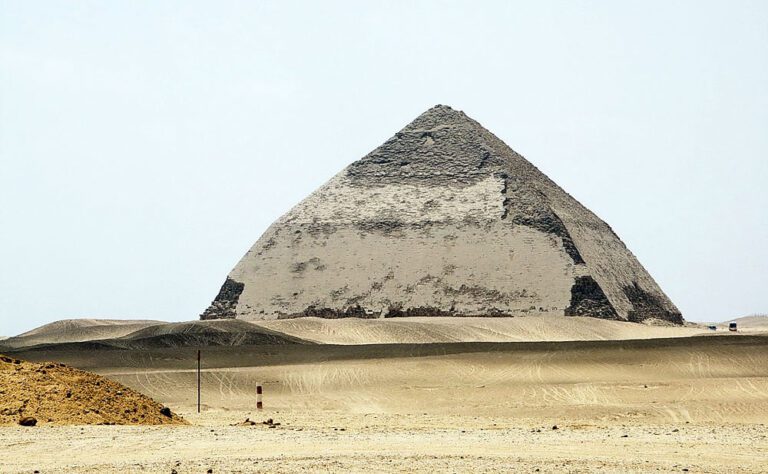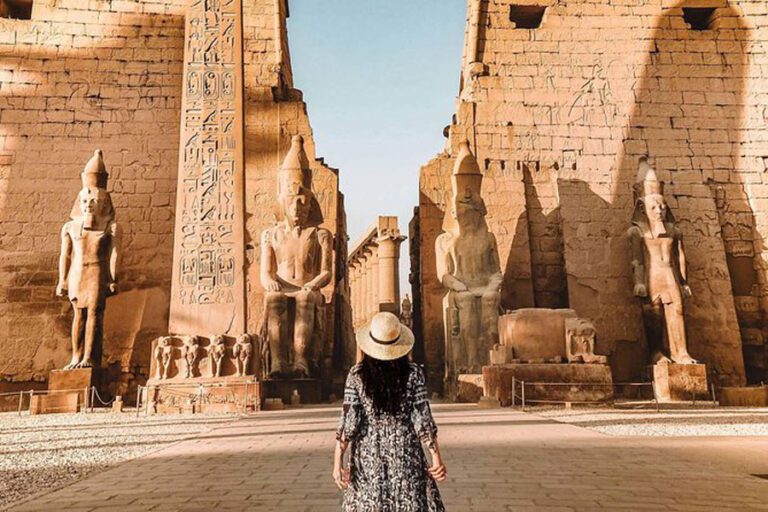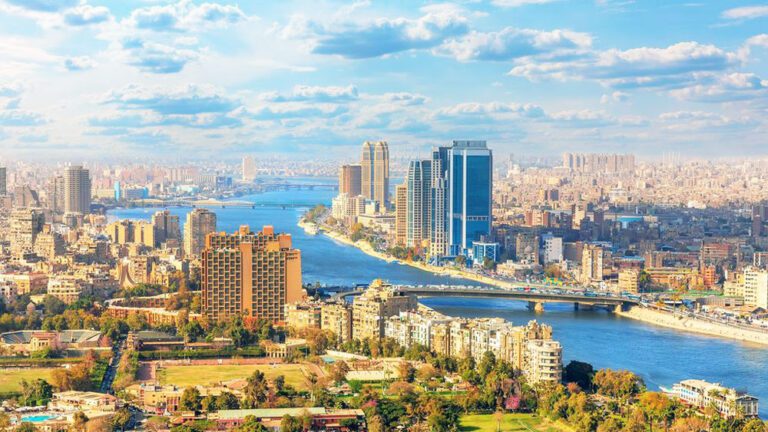Journey through History: A Visit to the Pyramids of Giza
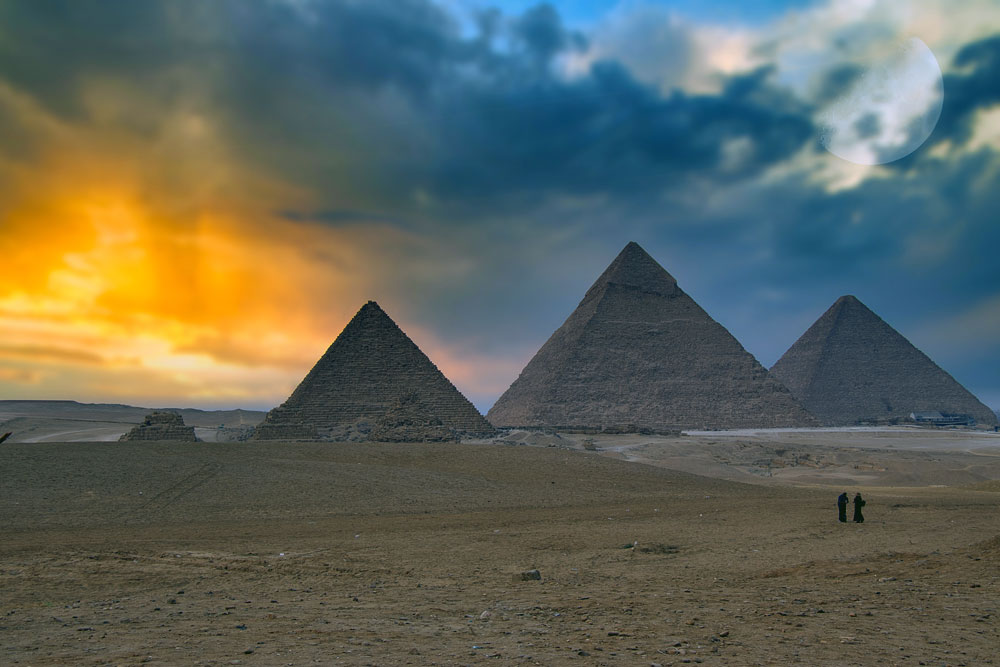
The Pyramids of Giza are one of the most recognizable and iconic landmarks in the world. They were built during the Old Kingdom period of ancient Egypt over 4,500 years ago.
The construction of the pyramids was an enormous undertaking requiring thousands of workers and incredible engineering feats. The blocks used to build the pyramids weighed several tons each and were transported from quarries miles away. The workers who built the pyramids were not slaves, as is often believed but were paid laborers.
The Pyramids of Giza are one of the most popular tourist attractions in Egypt. Located just outside of Cairo these ancient wonders have stood the test of time. Here are some of the top reasons why people visit the Pyramids of Giza:
1. Explore the Pyramids

Exploring the Pyramids of Giza is an unforgettable experience that takes you on a journey through time to the ancient world of Egypt.
You can climb inside the pyramids and explore the narrow passageways and chambers within. The Great Pyramid of Giza, also known as the Pyramid of Khufu, is the largest and most famous of the pyramids with an estimated 2.3 million stone blocks used in its construction.
Inside the pyramids, you can see the burial chamber where the pharaoh was laid to rest along with various other chambers and passages. The walls are adorned with hieroglyphs and artwork that provide insight into ancient Egyptian culture and beliefs.
You can also explore the surrounding area, which includes other smaller pyramids and temples. The Pyramids of Giza are located on the Giza Plateau, near the city of Cairo, and offer stunning views of the surrounding desert landscape.
2. Visit the Sphinx
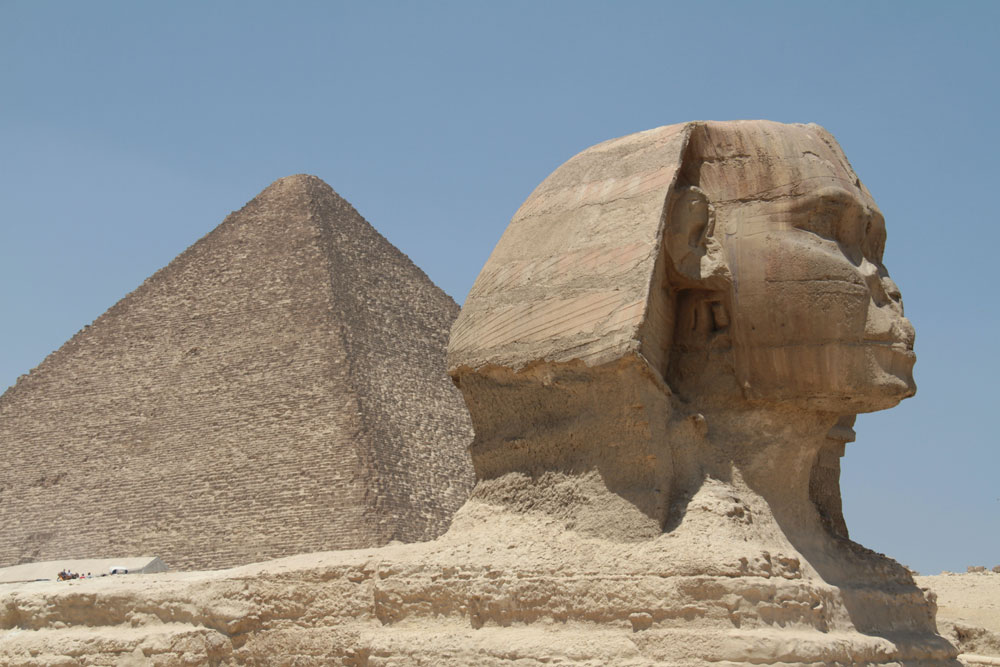
Visiting the Sphinx is an essential part of any trip to the Pyramids of Giza. Located just a short distance from the pyramids this iconic statue has been a symbol of ancient Egypt for thousands of years.
The Sphinx is a massive statue that depicts a creature with the body of a lion and the head of a human. It is believed to have been constructed during the reign of Pharaoh Khafre who was also responsible for the construction of the second-largest pyramid at Giza.
You can get up close to the Sphinx and admire its size and intricate details. The statue is carved from a single block of limestone and stands over 20 meters tall.
The Sphinx has been a source of fascination and mystery for centuries, with legends and myths surrounding its construction and purpose. Learn about these myths and legends as well as the historical significance of the Sphinx from tour guides or information plaques.
3. Enjoy a Camel Ride
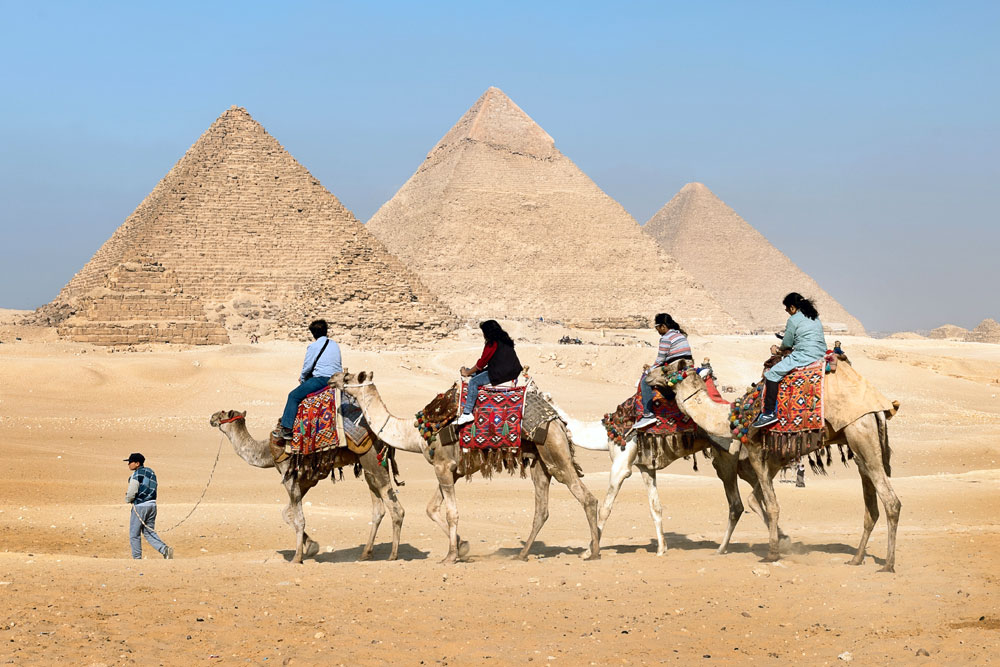
Taking a camel ride is a popular way to experience the Pyramids of Giza. These majestic creatures have been used for transportation in the desert for centuries and offer a unique way to explore the area around the pyramids.
Go on a tour of the Giza Plateau and enjoy stunning views of the pyramids and the surrounding desert landscape. The rides are led by experienced guides who provide information about the area’s history and significance.
Riding a camel is an unforgettable experience with a unique perspective from the animal’s high vantage point. Take photos of the pyramids and the desert scenery and selfies with the pyramids in the background.
Camel rides are suitable for all ages, and the duration of the ride can vary from 30 minutes to a few hours. The longer rides usually include additional stops at other sites or attractions in the area. You can either book a camel ride in advance or on-site at the Pyramids of Giza.
Camel rides are usually available throughout the day but the best time for a ride is during the early morning or late afternoon when the weather is cooler and the light is perfect for taking photos.
4. Visit the Solar Boat Museum
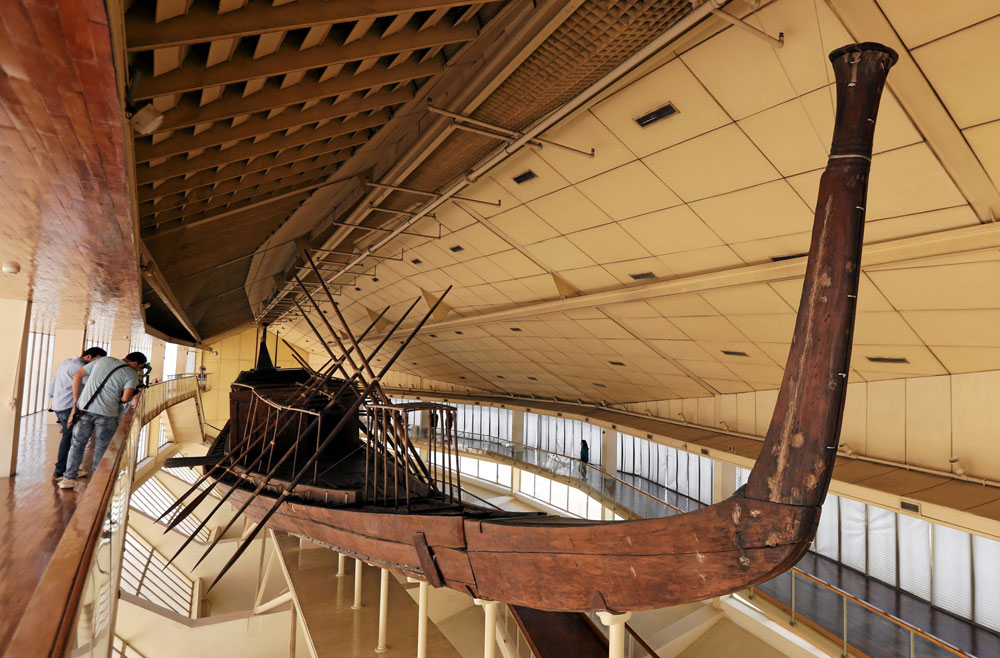
A visit to the Solar Boat Museum is a fascinating experience for anyone interested in ancient Egyptian history and culture. Located near the Pyramids of Giza this museum houses the reconstructed wooden boat of Pharaoh Khufu which was discovered buried near his pyramid.
The Solar Boat, also known as the Khufu Ship, is believed to have been built around 2500 BC and was used in the Pharaoh’s journey to the afterlife. The boat is made of cedar wood and is over 140 feet long, with 12 oars and a mast for sailing. The boat was discovered in the 1950s during an excavation of the area.
The museum displays the reconstructed Solar Boat along with detailed information about its history, construction, and significance. You can see the intricate details of the boat up close and learn about the techniques used by ancient Egyptians to build such impressive vessels.
The museum also features a presentation that provides further context and information about the Solar Boat and its discovery. You will learn about the excavation process and the challenges involved in preserving and reconstructing such an ancient artifact.
The Solar Boat Museum also houses a collection of other ancient Egyptian artifacts and exhibits, including statues, pottery, and jewelry. Learn about the history and culture of ancient Egypt and gain a deeper understanding of the significance of the pyramids and the role they played in the lives of the ancient Egyptians.
5. Watch the Sound and Light Show
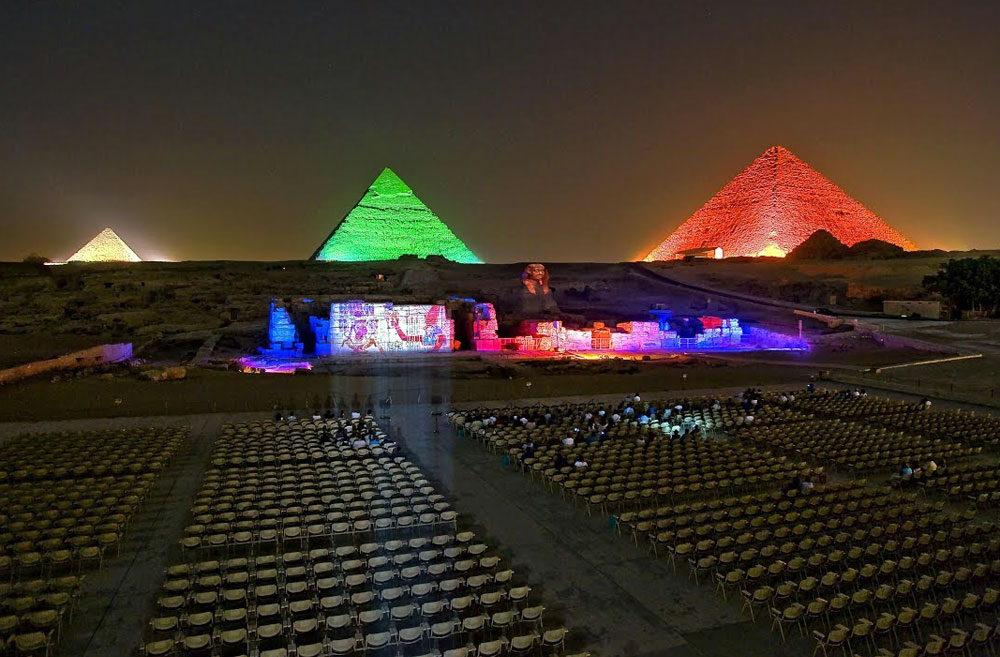
The Sound and Light Show is an audio-visual presentation that takes place in the evening using state-of-the-art technology to illuminate the pyramids and bring their history to life.
The show takes place in the evening after the pyramids have closed to the public and takes visitors on a journey through time, telling the story of the pyramids and the people who built them.
Sit back and relax as the pyramids are illuminated with colorful lights while a narrated commentary explains the history and significance of the pyramids and the ancient Egyptians who built them. The narration is accompanied by a stunning display of lights and sound effects, which create an immersive and atmospheric experience.
The show also includes music, sound effects, and projections that bring the pyramids to life, creating a magical and unforgettable experience. It is available in several languages: English, French, Spanish, Italian, Japanese, and Arabic.
Watching the Sound and Light Show is a great way to see the pyramids in a different light and gain a deeper appreciation for their history and significance. It’s also a great opportunity for photography as the illuminated pyramids make for stunning photos.
Although you can purchase tickets in advance on the day of the show it’s recommended to book tickets in advance as the show can sell out quickly during peak tourist season.
6. Explore the Valley Temple
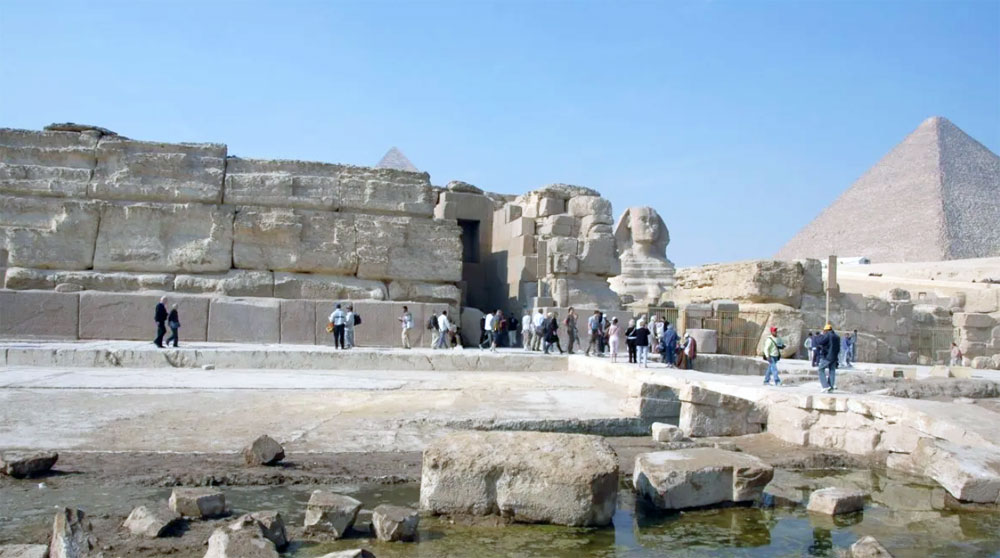
The Valley Temple is located on the east side of the Pyramid of Khafre and is one of the best-preserved examples of ancient Egyptian temple architecture.
The temple was built during the reign of Pharaoh Khafre and was used for the embalming of the pharaoh’s body and purification rituals. It’s believed that the temple was used for ceremonies and rituals associated with the Sphinx which was considered a sacred and important symbol in ancient Egypt.
One of the most impressive features of the Valley Temple is the massive granite blocks that make up the walls of the temple. These blocks weigh more than 100 tons and were transported from Aswan over 500 miles away.
The temple also features a large statue of the pharaoh which is one of the few remaining statues of Khafre.
You can explore the various chambers of the temple, including the main entrance, the hypostyle hall, the offering hall, and the sanctuary.
7. Shop for Souvenirs
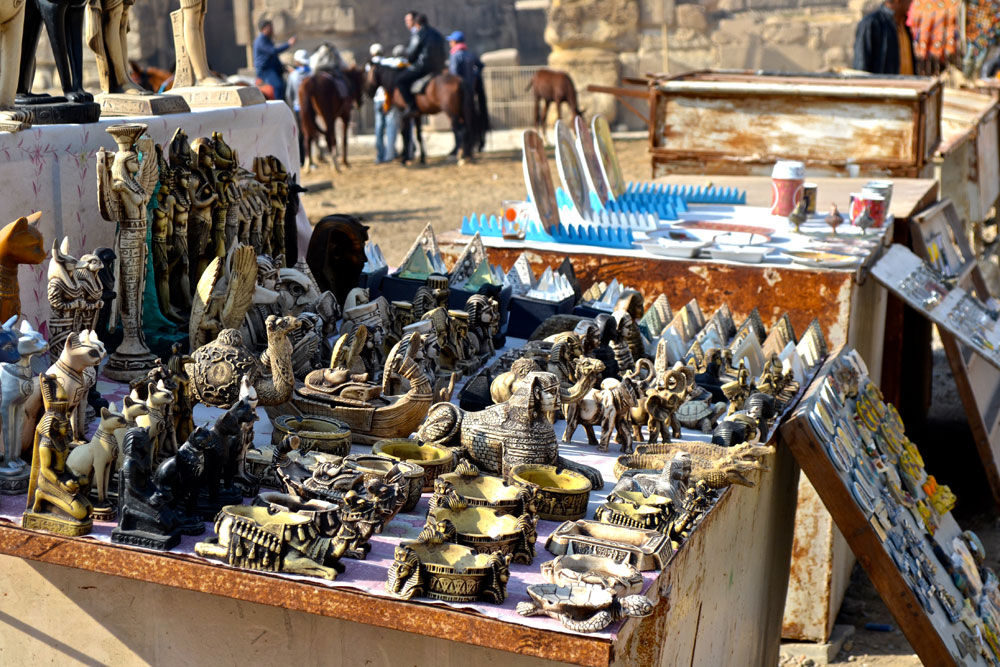
The most popular souvenirs to buy at the Pyramids of Giza are small replicas of the pyramids, sphinxes, and other ancient Egyptian artifacts. You can also find a range of handmade crafts, jewelry, textiles, pottery, and wood carvings that are made by local artisans.
One of the best places to shop for souvenirs is the Khan el-Khalili market located in the heart of Cairo. This market is one of the oldest and largest in the Middle East and offers a wide selection of goods such as spices, perfumes, textiles, and jewelry.
Be prepared to bargain and haggle when shopping for souvenirs as it’s a common practice in Egyptian markets. Always check the quality of the goods before purchasing and be aware of scams and fake products.
8. Enjoy a Picnic
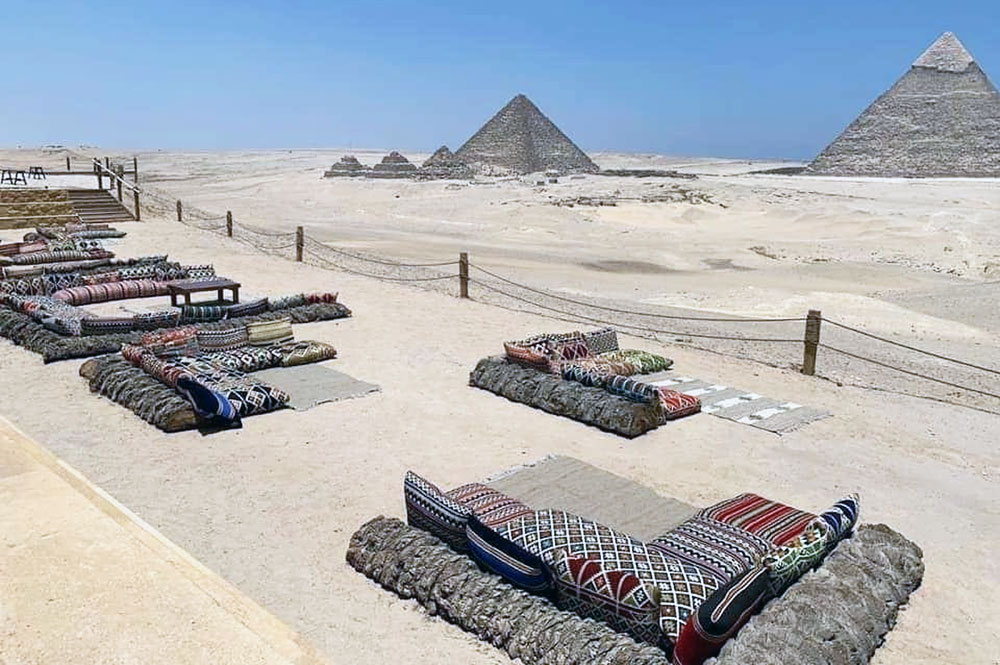
There are several areas around the pyramids that are ideal for picnics, including the Sphinx Park and the panoramic view area.
You can bring your own food and drinks or purchase them from nearby vendors. Many vendors offer traditional Egyptian snacks and refreshments, such as falafel, koshari, and fresh juice.
Picnicking near the pyramids is a unique and memorable experience and you can enjoy your meal while admiring the ancient wonders of the world. It’s also a great way to take a break from exploring the pyramids and enjoy a peaceful moment in the beautiful surroundings.
However, it’s important to be aware of the rules and regulations regarding picnics near the pyramids. Please do not litter and dispose of your trash properly. Additionally, do not climb on the pyramids or enter restricted areas.
9. Take a Hot Air Balloon Ride
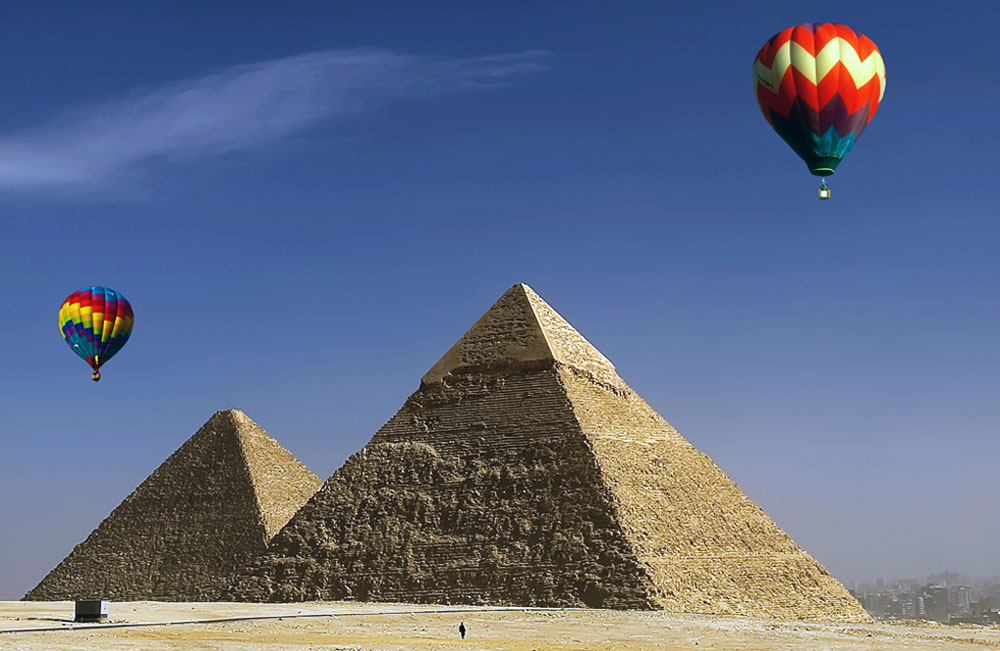
A hot air balloon ride is a unique and thrilling experience giving you stunning panoramic views of the pyramids and the surrounding landscape.
Hot air balloon rides typically start early in the morning with stunning views of the sunrise over the pyramids providing the best lighting for photos and creating a breathtaking atmosphere. The rides usually last about 45 minutes to an hour and cover a distance of 3-6 miles (5-10 km) giving you a bird’s eye view of the pyramids, the Sphinx, and the surrounding desert.
The hot air balloon ride is a peaceful and serene experience with only the sound of the wind and the occasional burst of heat from the balloon’s burners breaking the silence.
It’s important to note that hot air balloon rides are weather dependent and may be canceled due to high winds or other unfavorable conditions. Be sure to book in advance as spots fill up quickly, especially during peak tourist seasons.
10. Visit the Egyptian Museum

Located in downtown Cairo, the Egyptian Museum houses one of the world’s largest collections of Egyptian artifacts, including treasures from the tombs of Tutankhamun and other pharaohs.
You can explore the various galleries and exhibits which feature ancient artifacts such as mummies, statues, and hieroglyphic tablets. Highlights of the museum include the Tutankhamun Gallery which contains a vast array of treasures from the famous pharaoh’s tomb and the Royal Mummy Room which houses the mummified remains of several pharaohs and their families.
The museum also offers guided tours which provide you with a deeper understanding of the exhibits and the history of Ancient Egypt. Set aside several hours to explore the museum as there is a lot to see and learn.
The Egyptian Museum is a great complement to a visit to the Pyramids of Giza as it provides a deeper understanding of the history and culture of the ancient civilization that built the pyramids.
Best Time to Visit The Pyramids of Giza
The best time to visit the Pyramids of Giza is during the winter months, from December to February, when the weather is mild and comfortable. During this time, temperatures typically range from 59 to 77° F (15 to 25° C) making it ideal for exploring the pyramids and other outdoor activities in the area.
In the summer months, from June to August, temperatures in the area can reach well over 86° F (30° C) and sometimes even higher making it very hot and uncomfortable for outdoor activities. This is the peak tourist season so the crowds can be quite large and the cost of accommodation and tours will be higher.
Spring (March to May) and fall (September to November) are also good times to visit, with comfortable temperatures and fewer crowds compared to the peak summer months. However, be aware that these seasons can be unpredictable in terms of weather with occasional sandstorms and rain showers.

